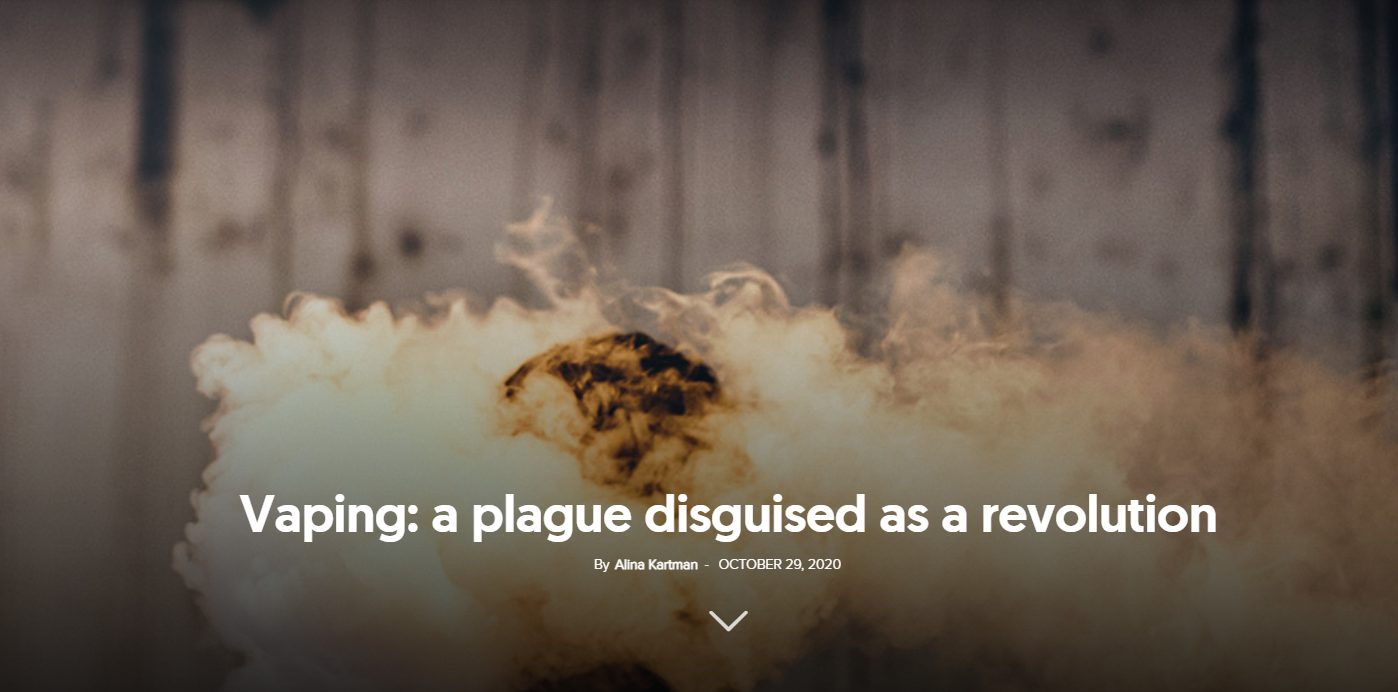Breathing is an act most of us take for granted, and there seems to be plenty of oxygen to go around. Yet, according to the World Health Organization, the use of e-cigarettes (aka vaping) has been on a steady incline during the last few years.
It’s estimated that, in less than six months, the number of users could soar to more than 55 million. The market for vaping products is breathtaking: more than $25 billion, with the US, Japan and the UK being the biggest consumers, and a host of European countries making up the top 10.
Smokescreen
There’s a common misconception that vaping is less harmful than smoking a cigarette, and many recreational enthusiasts cite this as a reason to use the product. For the uninformed, vaping is the act of inhaling and exhaling a vapour (not smoke), which is produced by an e-cigarette or any similar fancy mod used for the purpose. For people trying to fight a smoking addiction, vaping has been encouraged as a preferable alternative by manufacturers and some advocates, due to the lower nicotine content and lack of poisonous additives like lead, mercury or arsenic. But who are these manufacturers and advocates, and what is their agenda?
The gradual decline of cigarette use, especially in developed countries, has seen multinational tobacco manufacturers channel their efforts into the vaping market. Behind the trendy brand names like VaporFi in Australia; Vuse, Blu, Juuls and MarkTen in the USA; and Vype in the UK, are well-established companies like British American Tobacco, Altria and RJ Reynolds, which have been rapidly falling out of favour among investors, governments and the public. These companies have been finding ways around the legislation and negative publicity their industry has endured over the past 30-plus years to re-establish a foothold in a burgeoning market.
While the “war on tobacco” put a dent in the industry by raising awareness of the mortality rates associated with cigarette smoking, it did not eradicate the largest six tobacco industry companies—known as “Big Tobacco”. These companies still spend nearly $26 million a day on advertising, with more than $700 million annually specifically earmarked for vaping products. That significant investment saw the industry rake in more than $915 billion worldwide in 2018.
Is anyone looking?
The morphing and re-emergence of these huge multinational conglomerates should be cause for concern. With budgets bigger than those of many small nations, they’re taking advantage of the opportunity to target teenagers via social media and creative advertising. The tobacco industry had been taxed to the point where many small producers fell out of the market or were gobbled up by the bigger companies.
The rationale for the high tax prices is that it acts as a deterrent, making the product too expensive to purchase. Anti-tobacco lobbyists argue that taxation is an effective way to tackle these big companies, but $915 billion of profit suggests there’s still plenty of incentive to keep selling and the presence of 1.1 billion smokers around the world should tell us that taxation is not a total solution.
The vaping gateway?
In Australia, it’s slowly dawning on health experts that they shouldn’t be too hasty to give the seal of approval to e-cigarettes. But, right now, the legislation is confusing. Australia’s Health Direct website says, “In all states and territories in Australia, it is illegal to sell, possess or use e-cigarettes that contain nicotine. But this does not guarantee all e-cigarettes sold legally are nicotine free.”
Teenagers are the group most susceptible to marketing practices and are therefore a key market for manufacturers. The Cancer Council reported vaping is the most popular form of smoking among 18–24 year-olds. Trends are similar elsewhere, with America’s Surgeon General referring to the problem as the “youth e-cigarette epidemic”.
To be entirely fair, studies have not been conclusive as to whether vapers are likely to convert to cigarette use. But the concern remains, and it is a valid concern, that nicotine—whether it is delivered in smoke or vapour—is addictive.
Maddie Nelson, an 18-year-old teenager from Utah who started vaping at age 15, was placed in a medically induced coma for three days after falling ill from complications arising from her daily vaping habit. Maddie, in a later interview with KSTU-TV, said her doctors had diagnosed her with acute eosinophilic pneumonia and explained to her that she had “fat particles growing inside her lungs that were related to the glycerin in e-cigarette liquid”. It is clear that her body was trying to fight an infection in her lungs as eosinophils are a type of blood cell that are part of the immune system.
The impact of vaping on the human body has been a cause for concern among medical experts, as the side effects are relatively unknown. As such, they advocate abstinence. The Centers for Disease Control and Prevention (CDC) and the WHO have noted that, while research in this area is lagging, they are deeply worried about the contents of the product. Some of the chemicals used in the cannisters, including the sweeteners, can be considered irritants and have been found to cause inflammation in the airways.
The announcement by the CDC that the US may have recorded its ninth fatality due to severe lung injuries caused by vaping should be a warning. There is a growing list, which stands at 530 cases across the USA, of people reporting respiratory emergencies, and the one common denominator is that they are e-cigarette users of either nicotine or cannabis products. Is it a coincidence?
Damage control
My colleague Andres, having quit cigarettes more than six months ago, vapes to wean himself off his nicotine addiction. I asked him how concerned he was about the recent developments. “I know it’s bad, but it’s the lesser of two evils for me,” he said, giving me a stoic shrug. But his eyes betrayed a hint of discomfort.
It’s not belligerence, or a desire to self-harm. Vaping has been advertised, successfully, as the next best thing for those addicted to nicotine. Andres is one of millions affected annually by the tragedy of nicotine use. “My grandma died from lung cancer caused by secondhand smoke from my grandpa’s cigarettes… He’s still alive, and no trace of cancer. It’s a risk I have chosen to live with,” he said, putting his vape pen back into his pocket almost apologetically.
Big Tobacco claims to have invested heavily into research to create a safer, cleaner smoking experience, and would have us believe that vaping is a much healthier alternative to cigarettes. I would urge caution, as do the institutions leading the fight against cancer and lung disease. With fatalities beginning to rise, researchers from the Australian Cancer Council have issued a statement warning against the use of e-cigarettes: “Once a harmful, addictive product is in wide circulation it is very difficult to rein in the damage, especially when it is targeted at young people.”
Addressing this growing concern should be a priority, and the options should never be limited to “quit or die”. It makes for a great slogan, but it isn’t practical. Vaping isn’t the only other option; people have been quitting long before e-cigarettes. Educating users about the health risks, implementing and enforcing regulations that protect the younger generation, and holding the tobacco producers accountable are the first steps in dealing with the problem.
Nigel Byng is a freelance writer based in West Palm Beach, Florida. A version of this article first appeared on the Signs of the Times Australia website and is republished with permission.




















